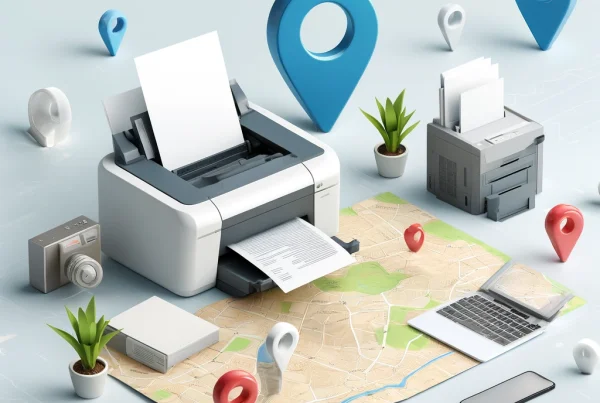Selling on Amazon can be a highly profitable venture, but it comes with its own set of challenges. One of the common issues sellers face is dealing with discrepancies and errors that lead to lost revenue. This is where Amazon reimbursement tools come into play. These tools help sellers recover money lost due to various reasons such as damaged inventory, lost shipments, and overcharged fees. In this comprehensive guide, we’ll explore the importance of Amazon reimbursement tools, how they work, and the best tools available to help you maximize your profits.
Why You Need an Amazon Reimbursement Tool
Selling on Amazon involves numerous transactions, and it’s not uncommon for errors to occur. Here are some of the common issues that can affect your revenue:
- Lost Inventory: Items that go missing in Amazon’s fulfillment centers.
- Damaged Goods: Products damaged while in Amazon’s custody.
- Customer Returns: Items returned by customers that are not restocked correctly.
- Overcharged Fees: Incorrect fees charged by Amazon for various services.
- Lost Shipments: Shipments that go missing during transit.
Amazon has a system in place for reimbursing sellers for such issues, but the process can be time-consuming and complex. This is where reimbursement tools come in handy, automating the process and ensuring you get back the money you’re owed.
How Amazon Reimbursement Tools Work
Amazon reimbursement tools streamline the process of identifying and filing claims for discrepancies. Here’s a step-by-step overview of how these tools typically work:
- Data Collection: The tool integrates with your Amazon Seller Central account to gather data on your transactions, inventory, and fees.
- Analysis: It analyzes the data to identify discrepancies such as lost or damaged inventory, incorrect fees, and customer return issues.
- Claim Generation: The tool generates claims based on the identified discrepancies, adhering to Amazon’s policies and guidelines.
- Submission: Claims are submitted to Amazon on your behalf, ensuring that all necessary documentation is provided.
- Monitoring: The tool monitors the status of your claims and follows up with Amazon if needed until the reimbursement is received.
Benefits of Using Amazon Reimbursement Tools
- Time-Saving: Automates the tedious process of identifying discrepancies and filing claims.
- Increased Accuracy: Reduces the risk of human error in identifying issues and calculating reimbursements.
- Maximized Reimbursements: Ensures all eligible claims are filed, helping you recover more money.
- Compliance: Keeps your claims in line with Amazon’s policies to avoid potential issues.
Top Amazon Reimbursement Tools
Here are some of the best Amazon reimbursement tools available, known for their efficiency and reliability:
- Refunds Manager: This tool offers comprehensive reimbursement services, handling everything from data analysis to claim submission. It charges a percentage of the successful reimbursements as a fee.
- AMZRefund: Known for its user-friendly interface, AMZRefund helps sellers recover lost revenue with minimal effort. It provides detailed reports and works on a commission basis.
- Seller Investigators: Specializing in identifying discrepancies and filing claims, Seller Investigators offer a transparent pricing model with no hidden fees. They handle claims for lost inventory, overcharged fees, and more.
- Getida: This tool offers a robust reimbursement service with a focus on maximizing recovery. It provides a free audit to estimate potential reimbursements and charges a fee only on successful claims.
- Helium 10 Refund Genie: Part of the Helium 10 suite, Refund Genie simplifies the reimbursement process for sellers. It identifies potential reimbursements and generates claims efficiently.
Choosing the Right Tool for Your Business
When selecting an Amazon reimbursement tool, consider the following factors:
- Pricing: Understand the fee structure, whether it’s a percentage of recovered funds or a subscription-based model.
- Ease of Use: Choose a tool with a user-friendly interface and easy integration with your Amazon Seller Central account.
- Customer Support: Ensure the tool offers reliable customer support to assist with any issues or questions.
- Reputation: Look for tools with positive reviews and a proven track record in the industry.
Tips for Effective Use of Amazon Reimbursement Tools
- Regular Monitoring: Regularly monitor your account and ensure the tool is working correctly. Keep an eye on the claims being filed and their status.
- Stay Informed: Stay updated with Amazon’s policies and guidelines regarding reimbursements to ensure compliance.
- Combine Tools: Some sellers use a combination of tools to maximize their reimbursements. For example, using a general reimbursement tool alongside a specialized one for specific issues.
Final Thoughts
Amazon reimbursement tool is invaluable for sellers looking to maximize their profits and ensure they recover every penny they’re owed. By automating the process of identifying discrepancies and filing claims, these tools save time, increase accuracy, and ultimately boost your bottom line. Whether you’re a seasoned seller or just starting, integrating a reliable reimbursement tool into your workflow can make a significant difference in your financial success on Amazon.
Choose the right tool for your business, follow best practices, and enjoy the peace of mind that comes with knowing your revenue is protected. Happy selling!





